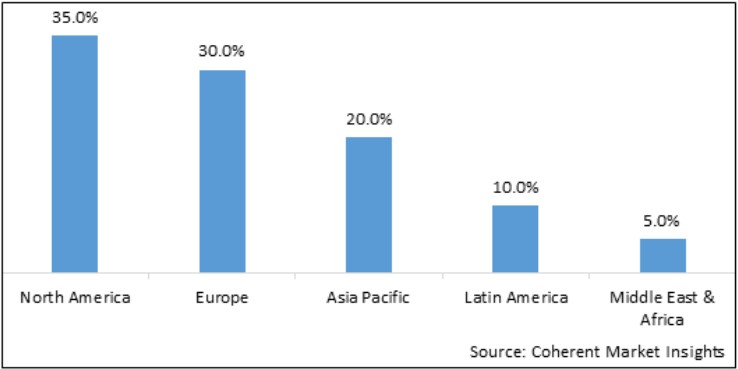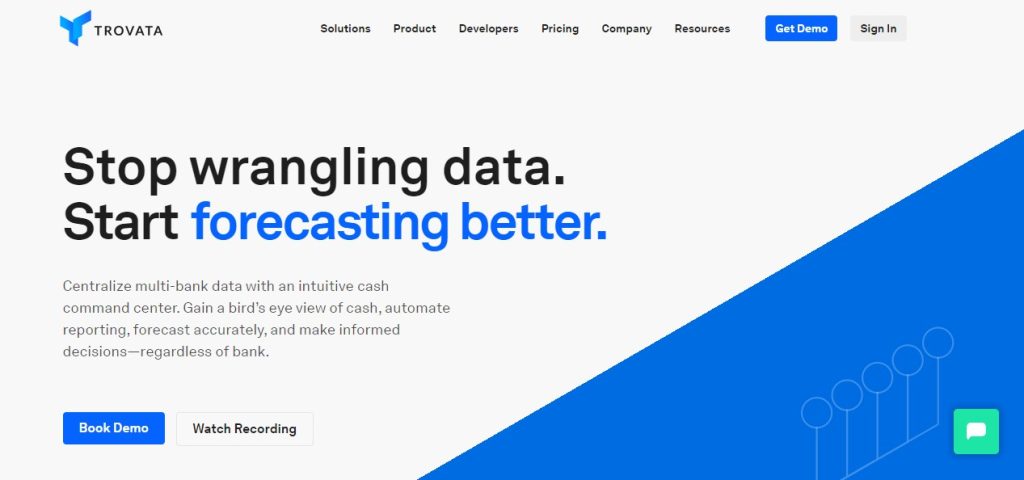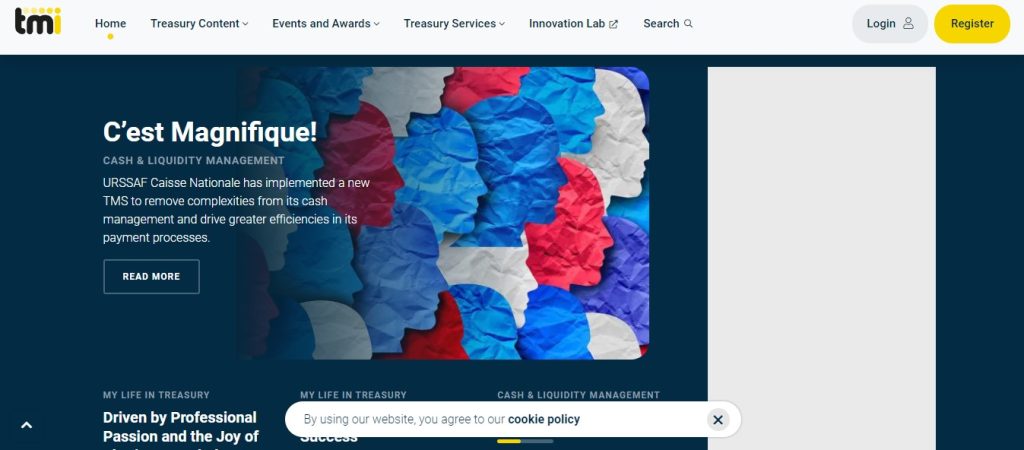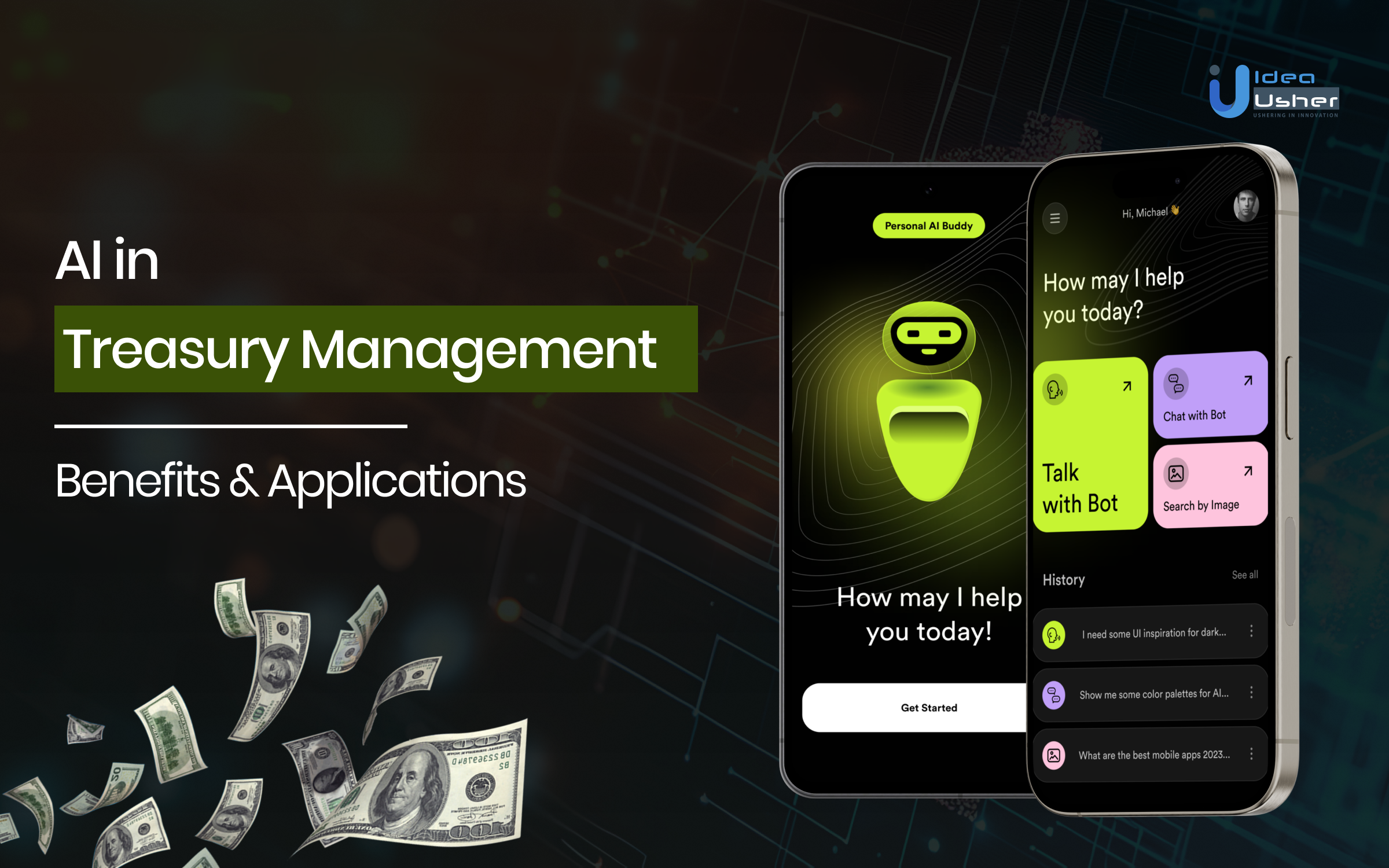Treasury management is a complex and demanding task due to market volatility, regulatory demands, globalization, technology advancements, and data volume. The traditional method that requires manual work is mostly slow and error-prone. Finance is a field where mistakes can have serious consequences, which is why there is constant pressure to make swift, accurate financial decisions, which leads to the need for advanced tools – more urgent than ever!
In this situation, using AI in treasury management can be really helpful. AI can handle large amounts of data quickly and accurately, cutting down on mistakes and allowing faster decisions. It automates routine tasks, predicts market trends, and spot potential risks that are the exact solutions that can address complex financial concerns. In fact, the report reveals that 91% of financial services companies are either assessing AI or already using it in production. Therefore, in this blog, we will be talking about the benefits and applications of using AI in Treasury Management. We will also outline the investment required along with the process that can help you implement it conveniently.
Treasury Management
Treasury management is important for maintaining a company’s financial health. It helps make sure that cash flow is managed effectively and risks are minimized. Basically, it ensures that a company has enough cash. This process involves several key functions:
- Cash Flow Management: Treasury teams forecast how much cash is needed, manage transactions, and ensure there’s enough money available to cover daily expenses and obligations.
- Credit Management: The team sets up and oversees credit lines to keep cash flow steady. They evaluate credit needs, negotiate with banks, and secure funds for the company’s growth and operations.
- Investment Optimization: Treasurers make decisions on how to invest extra cash to earn the best returns while managing risks making sure investments fit the company’s financial goals.
- Risk Management: Treasury management involves spotting and dealing with financial, reputational, and operational risks. This includes planning for unexpected events like economic downturns or global crises.
The global treasury management market is expected to grow substantially soon. It was worth about $5.1 billion in 2023 and is projected to hit $12.6 billion by 2030, with an annual growth rate of 13.8% during this time.

What Is AI In Treasury Management?
AI in treasury management refers to the use of artificial intelligence technologies to automate and enhance various financial tasks within a company’s treasury department. It helps forecast cash flows, detect fraud, and manage financial risks by analyzing large volumes of data. AI provides real-time insights that improve decision-making around liquidity, working capital, and compliance with regulations. Additionally, AI tools optimize processes like payment schedules and inventory management, leading to better cash usage.
Challenges of Traditional Treasury Management | Description | AI Solutions |
| Volatility in Financial Markets | Fluctuations in exchange rates, interest rates, and commodity prices. | Predicts trends and mitigates risks. |
| Regulatory Compliance | Keeping up with changing regulations and financial standards. | Automates compliance monitoring. |
| Cybersecurity Threats | Vulnerability to cyber-attacks and data breaches. | Enhances threat detection and response. |
| Complexity of Global Operations | Managing financial operations across different countries and banking systems. | Optimizes operations through automation and analytics. |
| Preventing Internal Fraud | Ensuring robust internal controls to prevent fraud and unauthorized transactions. | Detects and prevents fraud in real-time. |
| Access to Accurate Data | Collecting, analyzing, and maintaining accurate financial data from multiple sources. | Improves data quality and accessibility. |
How Does AI For Treasury Management Work?
Now, we know that AI improves treasury management by automating tasks, providing real-time insights, and optimizing financial strategies. This approach makes it easier to manage liquidity, assess risks, and comply with regulations. Here is the actual process that takes place:
- The process begins with gathering data from multiple sources. This includes cash flow reports to track the movement of funds, bank statements for monitoring balances, market data for investment insights, risk metrics to assess various risks, and compliance records to ensure all activities meet regulatory standards.
- The collected data is then cleaned and organized. It is converted into a format suitable for AI analysis.
- The prepared data is fed into AI models. These models analyze the information to identify trends, forecast financial outcomes, and provide actionable recommendations. They integrate with various tools via APIs to enhance their functionality.
- Through a treasury management app, users submit queries about financial planning, risk management, or compliance. The AI processes these queries and returns detailed reports and strategies.
- The system includes feedback mechanisms to continuously refine its performance, with AI agents addressing complex problems and adapting to new data.
- Finally, AI-driven treasury solutions are deployed on suitable platforms, with options for cloud hosting. Validation tools are used here to check the accuracy of the AI’s outputs, making sure the insights are both useful and dependable.
Here is the detailed and technical workflow for AI-driven Treasury Management:
| Steps | Details |
| Step 1: Data Sources | Cash flow statements, bank statements, market liquidity data, risk metrics, compliance reports. |
| Step 2: Data Pipelines | Ingests, cleans, and structures data for analysis. |
| Step 3: Embedding Model | Converts data into numerical representations for AI processing. |
| Step 4: Vector Database | Stores transformed data for efficient querying. |
| Step 5: APIs & Plugins | Connects components and adds functionalities (e.g., Serp, Zapier). |
| Step 6: Orchestration | Manages workflows and integrates data, APIs, and LLM interactions. |
| Step 7: Query Execution | Handles user queries related to financial forecasts and compliance. |
| Step 8: LLM Processing | Retrieves relevant data and processes it through suitable LLMs. |
| Step 9: Output | Provides insights like financial strategies and compliance reports. |
| Step 10: Feedback Loop | Uses user feedback to refine AI outputs. |
| Step 11: Agent | Tackles complex problems and enhances learning through reasoning and planning. |
| Step 12: LLM Cache | Speeds up response times by caching frequently accessed data. |
| Step 13: Logging/LLMOps | Logs and monitors LLM performance using specialized tools. |
| Step 14: Validation | Ensures output accuracy using validation tools. |
| Step 15: LLM Hosting | Executes and hosts tasks using LLM APIs and cloud platforms. |
Machine Learning In Treasury Management
Machine learning provides smarter and more effective ways to handle security, forecasting, and cash flow:
- ML enhances fraud detection by analyzing past transaction data to find unusual patterns. Advanced models learn from this data, making it easier to identify transactions that don’t match the usual behavior. This allows for faster detection and prevention of potential fraud.
- As instant payments become more common, real-time monitoring has become important. ML tools continuously check transactions as they occur, quickly flagging any irregularities. Plus, immediate alerts enable treasury teams to act swiftly, preventing fraudulent transactions from being processed.
- Traditional cash forecasting methods can be inaccurate. ML improves accuracy by examining historical cash flow data and predicting future trends. It takes various factors into account, such as market conditions, to provide more reliable forecasts, helping organizations manage cash more effectively and reduce financial risks.
- ML also plays a key role in managing liquidity by predicting cash needs and offering advice on whether to invest extra funds or borrow to cover shortages. This helps organizations maintain a balanced cash flow, leading to more stable financial management.
Use Case And Applications Of AI In Treasury Management
Here are the ten key applications of AI in treasury management supported by real-world implementations:
1. Cash Flow Forecasting
AI has improved cash flow forecasting by processing vast amounts of historical and market data. These models predict future cash inflows and outflows with a high degree of accuracy. For instance, Kyriba’s AI-powered tools provide companies like Toyota with precise cash flow forecasts and enable them to optimize liquidity and make informed financial decisions.
2. Payment Fraud Detection
AI enhances payment security through real-time monitoring and anomaly detection. Financial institutions such as HSBC utilize AI to analyze transaction patterns, flag suspicious activities, significantly reduce the risk of payment fraud, and protect assets from unauthorized access.
3. Automated Reconciliation
Reconciling bank statements with internal records is a time-consuming process prone to errors. AI automates this task, comparing records and identifying discrepancies efficiently. Trovata, for example, uses AI to streamline cash reporting and reconciliation and allows treasury teams to focus on higher-value activities.
4. Investment Decision Support
AI aids in making investment decisions by analyzing market trends and historical performance data. Companies like BlackRock utilize AI algorithms to manage their investment portfolios, identifying profitable opportunities and minimizing risks, which enhances returns for clients.
5. Risk Management
Risk management is important in treasury operations, and AI plays a key role here. By assessing market conditions and financial data, AI tools help institutions like JP Morgan identify potential risks early and recommend appropriate mitigation strategies, thus safeguarding investments.
6. Regulatory Compliance
Compliance with financial regulations is mandatory, and AI simplifies this complex task. Deutsche Bank uses AI to continuously monitor transactions and ensure they adhere to regulatory standards. It reduces the likelihood of penalties and legal issues for them.
7. Liquidity Management
Managing liquidity efficiently is essential for the financial health of any organization. AI solutions analyze cash positions and market conditions to optimize liquidity management. Citibank, for instance, relies on AI to manage its liquidity needs, ensuring that funds are available when required while maximizing investment opportunities.
8. Debt Management
AI assists in managing debt portfolios by analyzing repayment schedules, interest rates, and market conditions. Barclays is one of the prominent names that use AI to optimize debt management strategies, lower costs, and improve the overall efficiency of debt handling.
9. Market Analysis
Understanding market trends is again another important step for strategic decision-making. AI enables detailed analysis of market data and offers insights that guide trading and investment strategies. Goldman Sachs employs AI to conduct thorough market analyses and helps traders and portfolio managers make well-informed decisions.
10. Customer Relationship Management
AI enhances CRM efforts by analyzing customer data and offering personalized recommendations. Financial institutions like Wells Fargo use AI to improve customer interactions, resulting in better service and increased customer satisfaction.
Companies Benefiting From AI In Treasury Management
Here’s how leading companies are utilizing AI to transform their treasury operations:
1. Kyriba

Kyriba uses AI to improve cash forecasting and detect fraud. Their technology analyzes large amounts of financial data, making cash flow predictions more accurate and spotting fraud more quickly. This helps them manage their money better and reduce financial risks.
2. HSBC

HSBC employs AI to enhance its risk management. By analyzing market trends and predicting financial risks, HSBC can address potential problems before they arise. This proactive approach helps HSBC stay ahead of market changes and protect its financial health.
3. Trovata

Trovata utilizes AI to automate cash reporting. The AI generates accurate, real-time cash reports, reducing manual work and errors. This makes cash management more efficient and reliable while freeing up time for their employees.
4. KPMG

KPMG integrates AI to make treasury operations more efficient. AI helps automate tasks like account reconciliation and financial forecasting. This boosts efficiency and allows treasury teams to focus on important decisions while improving the overall management of finances.
5. Treasury Management International

Treasury Management International uses AI to improve liquidity management. Their AI tools provide insights that help companies manage their cash flow better. This leads to smarter financial decisions and supports business growth.
Technical Considerations For Implementing AI In Treasury Management
When implementing AI in treasury management, several technical factors must be addressed to ensure effectiveness and accuracy:
1. Handling Time-Series Data
AI models need to manage financial data with attention to seasonal fluctuations and long-term trends. It’s important to account for autocorrelation, where data points influence each other over time, and to identify and correct outliers to avoid skewed results.
2. Dealing With High-Frequency Data
For real-time financial analysis, implement systems that process data instantly to capture market changes as they happen. Ensure low-latency systems for rapid decision-making and apply noise reduction techniques to filter out irrelevant data.
3. Integrating External Data Sources
Combine internal financial data with external inputs like economic indicators, market news, and regulatory updates. Ensure the reliability and consistency of external data and standardize it for effective integration and analysis.
4. Addressing Data Sparsity
Use transfer learning with pre-trained models to handle limited data effectively. Augment your dataset with synthetic data to improve model performance and consider ensemble methods to combine insights from multiple models.
5. Dealing With Non-Stationary Data
Test data for stationarity and apply transformations if needed. Utilize forecasting techniques such as ARIMA, SARIMA, or LSTM to manage data that changes over time.
6. Considering Regulatory Compliance
Make sure that the AI models are explainable and meet regulatory standards. Comply with data privacy laws and maintain audit trails for transparency.
7. Addressing Model Risk
Regularly backtest models using historical data to measure performance and conduct stress tests to identify vulnerabilities under extreme conditions. Establish a model governance framework to monitor and maintain the models effectively.
Steps To Implement AI In Treasury Management
Implementing AI in treasury management needs a careful plan to improve financial operations. Here are the steps that will help you integrate AI successfully:
1. Align AI With Treasury Objectives
Begin with defining the goals of your treasury department. Identify how AI can help, whether it’s improving cash flow forecasts or enhancing risk management. Focus on areas where AI can add the most value. This alignment ensures that your AI efforts directly support your financial objectives.
2. Establish A Data Governance Framework
Set up a solid data governance plan to ensure data quality and security. Accurate and consistent data is important for AI to work effectively. So, implement strong security measures to protect sensitive financial information and comply with regulations. This foundation helps AI deliver reliable results. Here are some widely recognized data governance frameworks that can be used to ensure data quality, security, and compliance in AI implementations:
| Framework | Focus | Description |
| NIST AI Risk Management | Risk management | Guidelines for managing AI risks. |
| OECD AI Principles | Ethical AI | Principles for responsible AI development. |
| EU Ethics Guidelines | Trustworthy AI | Guidelines for lawful, ethical, and robust AI. |
| IEEE Ethics Initiative | Ethical AI | Standards for ethical AI development. |
| Montreal Declaration | Responsible AI | Ethical guidelines emphasizing human rights. |
| Microsoft Purview | Data governance | Solutions for governing and managing data. |
3. Select Appropriate AI Tools
Choose AI tools that are designed for treasury management. Look for solutions with features specifically suited to financial tasks like forecasting and risk assessment. Make sure that these tools can integrate easily with your existing systems. This step ensures the tools fit seamlessly into your operations. Here are some AI tools specifically designed for treasury management:
| Tool | Features | Integration |
| Kyriba | Cash forecasting, fraud detection, working capital optimization | Integrates with ERP and financial systems |
| KPMG Treasury Solutions | Cash management, liquidity planning, risk management | Uses ARIMA, additive regression, neural networks |
| Bank of America Treasury Solutions | Cash forecasting, risk management, task automation | Uses machine learning, natural language processing, predictive analytics |
| FTI Treasury | Cash flow optimization, risk assessment, compliance management | Streamlines communication, automate routine tasks |
4. Consider Regulatory Compliance
Compliance and transparency are key to maintaining trust and meeting industry standards. Make sure your AI implementation meets all relevant financial regulations, including data privacy and reporting requirements. Plus, prepare to explain how AI makes decisions, especially when these decisions affect financial outcomes. Here are some key financial regulations to consider when implementing AI in treasury management:
| Regulation | Region | Focus | Relevance |
| GDPR | EU | Data privacy and protection | Secure handling of personal data. |
| CCPA | California, USA | Consumer data privacy | Transparency and control over personal data. |
| SOX | USA | Financial reporting and transparency | Accurate financial reporting and internal controls. |
| Dodd-Frank Act | USA | Financial stability and consumer protection | Prevent systemic risks in financial institutions. |
| Basel III | Global | Banking regulation | Standards for capital adequacy, stress testing, and liquidity. |
| PCI DSS | Global | Payment data security | Secure handling of cardholder information. |
| FATF Recommendations | Global | Anti-money laundering and counter-terrorism financing | Detect and prevent illicit financial activities. |
| IFRS | Global | Financial reporting | Consistency and transparency in financial statements. |
5. Address Risks And Uncertainties
Identify potential risks with AI models, such as data biases or inaccuracies. Develop backup plans to handle possible issues or failures. Addressing these risks helps maintain stability and it makes sure that the AI system remains reliable and effective.
6. Engage Treasury Stakeholders
Involve treasury teams, IT staff, and AI experts in the process. Here, good communication and teamwork are essential for a smooth AI implementation. So, focus on providing training and support to help stakeholders adapt to new technologies. Basically, engaging everyone involved helps ensure a successful transition.
7. Focus On Continuous Improvement
Regularly update and retrain AI models to keep them current with market changes and new data. Monitor AI performance and make adjustments as needed. This ongoing process of improvement helps maintain the accuracy and effectiveness of your AI systems over time.
Cost Associated With The Implementation Of AI In Treasury Management
Implementing AI in treasury management involves several cost components. Here is a detailed breakdown of the typical costs associated with such an implementation:
| Cost Component | Description | Minimum Cost | Maximum Cost |
| Software and Licensing | Purchasing AI software and licenses | $2,000 | $20,000 |
| Hardware and Infrastructure | Servers, storage, and hardware | $1,500 | $15,000 |
| Data Acquisition and Management | Acquiring, cleaning, and managing data | $1,000 | $10,000 |
| Development and Integration | Developing AI models and integrating with systems | $2,500 | $25,000 |
| Training and Change Management | Training staff and managing change | $1,000 | $10,000 |
| Consulting and Professional Services | Consulting services for implementation | $1,000 | $10,000 |
| Maintenance and Support | Ongoing maintenance and support | $500 | $5,000 |
| Compliance and Security | Ensuring compliance and security | $500 | $5,000 |
| Total Cost Range | – | $10,000 | $100,000 |
Factors Affecting AI Costs In Treasury Management
Several key factors can impact the cost of implementing AI in treasury management:
- Regulatory Compliance: Meeting financial regulations such as GDPR, SOX, and Basel III requires significant investment in security measures and regular audits to ensure compliance.
- Data Quality and Volume: The quality and quantity of data needed to train AI models can drive up costs. High-quality, large datasets require more storage and processing resources.
- System Integration: Integrating AI with existing treasury management systems often involves complex and costly custom development to ensure smooth operation.
- Customization Requirements: Customizing AI solutions to meet specific treasury needs involves additional development and testing, increasing overall costs.
- Scalability Needs: Developing AI systems that can scale with growing data and transaction volumes typically incurs higher expenses.
- Ongoing Maintenance and Support: Costs for maintaining and supporting AI systems include regular updates and troubleshooting.
- Training and Change Management: Training staff and managing the transition to AI tools involve extra costs for effective adoption and usage.
Generative AI In Treasury Management
Generative AI brings valuable capabilities to treasury management through its ability to produce new data and scenarios:
1. Data Creation
Generative AI produces synthetic financial data, maintaining privacy while supplying the necessary information for model training and scenario analysis. This is essential when handling confidential data or limited datasets.
2. Risk Assessment
It generates diverse risk scenarios, which improves stress testing and risk evaluation. This helps treasury teams detect weaknesses and develop effective strategies to address them.
3. Investment Optimization
Generative AI assists in optimizing portfolios by creating alternative investment scenarios. This enables a thorough analysis of risk-return balances and improves the testing of investment strategies under various market conditions.
4. Cash Flow Forecasting
AI-driven scenario generation improves the accuracy of cash flow forecasts under different economic conditions. It actually supports better planning and resource management.
5. Compliance And Fraud Detection
Generative AI supports regulatory compliance by simulating different scenarios and strengthens fraud detection through advanced models that identify unusual patterns using synthetic data.
AI For Treasury Management: Future Trends And Opportunities
AI is changing how treasury management works, making processes faster, more secure, and more strategic.
- AI will transform decision-making in treasury management by analyzing large volumes of financial data in real-time. This will lead to more accurate cash flow forecasts, better risk management, and smarter investment strategies, helping treasury teams stay ahead of market changes.
- Expect AI to automate routine treasury tasks, such as processing transactions, reconciling accounts, and generating reports. This automation will reduce errors, cut down on manual work, and allow treasury staff to focus on higher-value activities that drive business growth.
- Future AI systems will offer improved fraud detection by analyzing transaction patterns more deeply. They will identify and flag unusual activities more effectively, enhancing the security of financial operations and reducing the risk of fraud.
- AI will enable real-time oversight of compliance with financial regulations. This will help ensure that treasury operations adhere to laws and standards, minimizing the risk of non-compliance and related penalties.
- AI’s integration with blockchain technology will improve the transparency and security of financial transactions. This combination will streamline treasury functions such as payments and settlements, reducing costs and increasing trust in financial processes.
- AI will provide more personalized financial solutions customized to specific organizational needs. This will make treasury management more effective by aligning strategies with the unique goals and challenges of each business.
Case Study: US Treasury’s Role In AI For Financial Services
The US Department of the Treasury noticed that AI is increasingly being used in the financial services sector.
- AI helps improve operations, manage risks, and enhance decision-making in financial institutions.
- However, the rise of AI also brings challenges, such as cybersecurity risks, fraud, and the need for better regulatory compliance.
Treasury’s Initiative
- In June 2024, the US Treasury issued an RFI to gather public input on how AI is being used in the financial services sector.
- The Treasury wants to understand the benefits of AI, the risks involved, and how it is being applied.
- The RFI seeks feedback from a wide range of people, including consumers, investors, financial institutions, and regulators.
- The Treasury is focused on identifying any barriers to the responsible use of AI and considering updates to current regulations.
Objective
- The main goal of the Treasury is to ensure that AI supports innovation in a responsible way while protecting the financial system.
- The Biden Administration is particularly interested in how AI can improve access to financial services for everyone.
- The insights from this initiative will help shape policies that encourage innovation while keeping consumers and the financial system safe.
The US Treasury’s actions show the importance of understanding AI’s impact on financial services. Moreover, by involving stakeholders and the public, the Treasury aims to develop regulations that ensure AI is used responsibly, maximizing its benefits and minimizing risks.
Conclusion
AI in treasury management is improving the ways financial operations are handled. With AI, tasks that once required significant time and effort are now more efficient, which allows us to make faster and more informed decisions. It helps with accuracy in forecasting, optimized cash flow, stronger risk management, and more. However, it’s important to adopt this technology with care. While AI provides many benefits, human oversight still remains essential. As technology advances, those who adapt to these changes will likely find themselves in a stronger position to navigate the complexities of modern finance. Adopting AI in treasury management isn’t just an upgrade; it’s becoming a necessity for sustained success.
Looking To Implement AI In Treasury?
Improve your treasury management with our AI expertise. With over 10 years of experience, 50,000+ hours of coding, and 200+ projects delivered, our team specializes in creating AI solutions customized to improve your financial operations. We understand the unique challenges in treasury management and offer custom AI tools to improve decision-making, risk assessment, and efficiency. So, you can trust us to bring innovative, effective solutions that meet your specific needs and make sure that your treasury operations are future-ready—partner with us for a seamless AI integration that sets you apart in the financial sector.
Work with Ex-MAANG developers to build next-gen apps schedule your consultation now
FAQ
How is AI used in treasury management?
AI helps in treasury management by automating tasks like cash flow forecasting, risk assessment, and fraud detection. It analyzes data in real-time, enabling better decisions and more effective liquidity management. AI also uses predictive analytics to anticipate market changes, helping treasurers make more accurate and efficient decisions.
Will the treasury be replaced by AI?
AI won’t replace the treasury but will support it. Treasurers will still be needed for strategic decisions and managing complex situations. AI can handle repetitive tasks and provide useful insights, allowing treasurers to focus on more important responsibilities that require human judgment.
How is AI used in financial management?
AI is used in financial management to automate tasks like budgeting, forecasting, and analyzing finances. It improves the accuracy of financial reports and helps manage risks by spotting patterns and issues early. AI also assists in making investment decisions, helping companies better manage their finances.
What is the role of technology in treasury management?
Technology simplifies treasury management by automating daily tasks, improving data accuracy, and enhancing risk management. It allows real-time tracking of cash flows and speeds up transactions. Tools like AI and machine learning help make better decisions and increase efficiency in managing treasury activities.




















